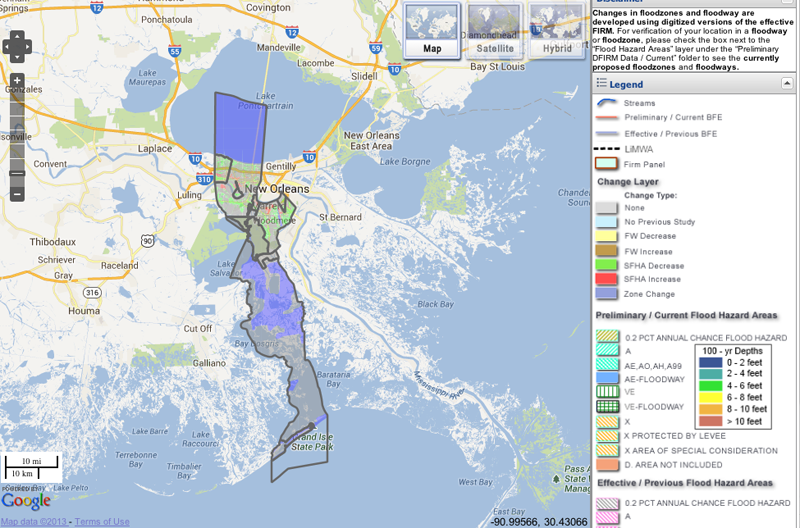

Instead, FEMA’s flood maps look backwards in time and determine the size of the 100-year and 500-year floodplain based on past events. However, FEMA’s flood maps do not currently depict future conditions. For example, as sea level rise, storm surge can reach further inland and affect a greater number of properties during a hurricane. Climate change is loading the dice in favor of more frequent and severe floods. Flood risks change over time due to a variety of factors, like changing land use patterns.Ĭlimate change impacts, like rising sea levels and more intense rain storms, also influence flood risk. If a map is not assessed within the five-year window, the level of flood risk is considered “unknown.” FEMA must reassess flood maps regularly because flood risks are not static.
Fema flood map update#
Therefore, FEMA’s flood maps must be accurate and up-to-date, otherwise, communities will be misinformed about their true flood exposure.įEMA is required to update flood maps every five years. As such, flood maps are used by government officials, developers, and planners to decide where it is safe to build. FEMA’s minimum floodplain building and land use requirements only apply in areas that are mapped to the 100-year flood level. 2% annual chance flood (500-year), and provide mapped communities with knowledge about their flood vulnerability. The flood maps depict the 1% annual chance flood (100-year flood) and the. The program requires all three legs – insurance, mapping, and building and land use regulations – to function.įEMA’s floodplain maps are a fundamental element of the flood insurance program, providing a basis for flood insurance rates and floodplain management regulations. The program provides more than cheap insurance, but also serves to promote sustainable floodplain development and flood risk identification. FEMA’s Flood Mapping ProgramĬongress enacted the NFIP to better protect the United States from flooding by providing a unified national program for floodplain management.

Floodplain mapping reform must be a priority, and part of a comprehensive effort to reform the NFIP. Congress should direct FEMA to include future conditions assessments as an information layer on all flood maps and to ensure that the process of creating and adopting flood maps receives proper oversight. Inaccurate and out-of-date flood maps put communities at risk.Ĭurrently, Congress is set to reform and reauthorize the National Flood Insurance Program (NFIP) by December 8 th. However, a recent investigation by the Department of Homeland Security’s Inspector General revealed that 58% of all FEMA flood maps are considered inaccurate or out-of-date. The Federal Emergency Management Agency (FEMA) is responsible for mapping the nation’s hazardous flood areas, including coastal areas susceptible to storm surge. Please refer to the MiEnviro Floodplain Service Request guidance for more information.The recent hurricanes, which inflicted severe damage from Puerto Rico to Texas’ Gulf Coast, have underscored the value of not only ensuring flood maps are accurate and up-to-date, but also that future conditions, like changing rainfall patterns, are accounted for in the depiction of flood risk. There is no charge for this service, however, depending on workload, the determination may take 4 to 8 weeks. To make such an estimate, the District floodplain engineer will need a map (preferably with a property description) showing the location of the property, an estimate as to how high the property is above the water level of the river, lake or stream, and how far the building site is away from the water. įor site specific questions, the Water Resources Division will provide an estimated 100-year flood elevation. For more information on the Flood Hazard Mapping process, see. Check out FEMA's floodplain mapping website. A community status book may be obtained from FEMA identifying the communities which have a floodplain map developed under the National Flood Insurance Program.įEMA is also in the process of developing digital flood insurance rate maps (DFIRM). Of the 1776 communities (Cities, villages, and townships) in Michigan, currently about 1,004 communities have floodplain maps that have been developed by FEMA. The primary source of floodplain mapping information in Michigan is the Flood Insurance Rate Maps (FIRMs), which are developed by the Federal Emergency Management Agency (FEMA).


 0 kommentar(er)
0 kommentar(er)
